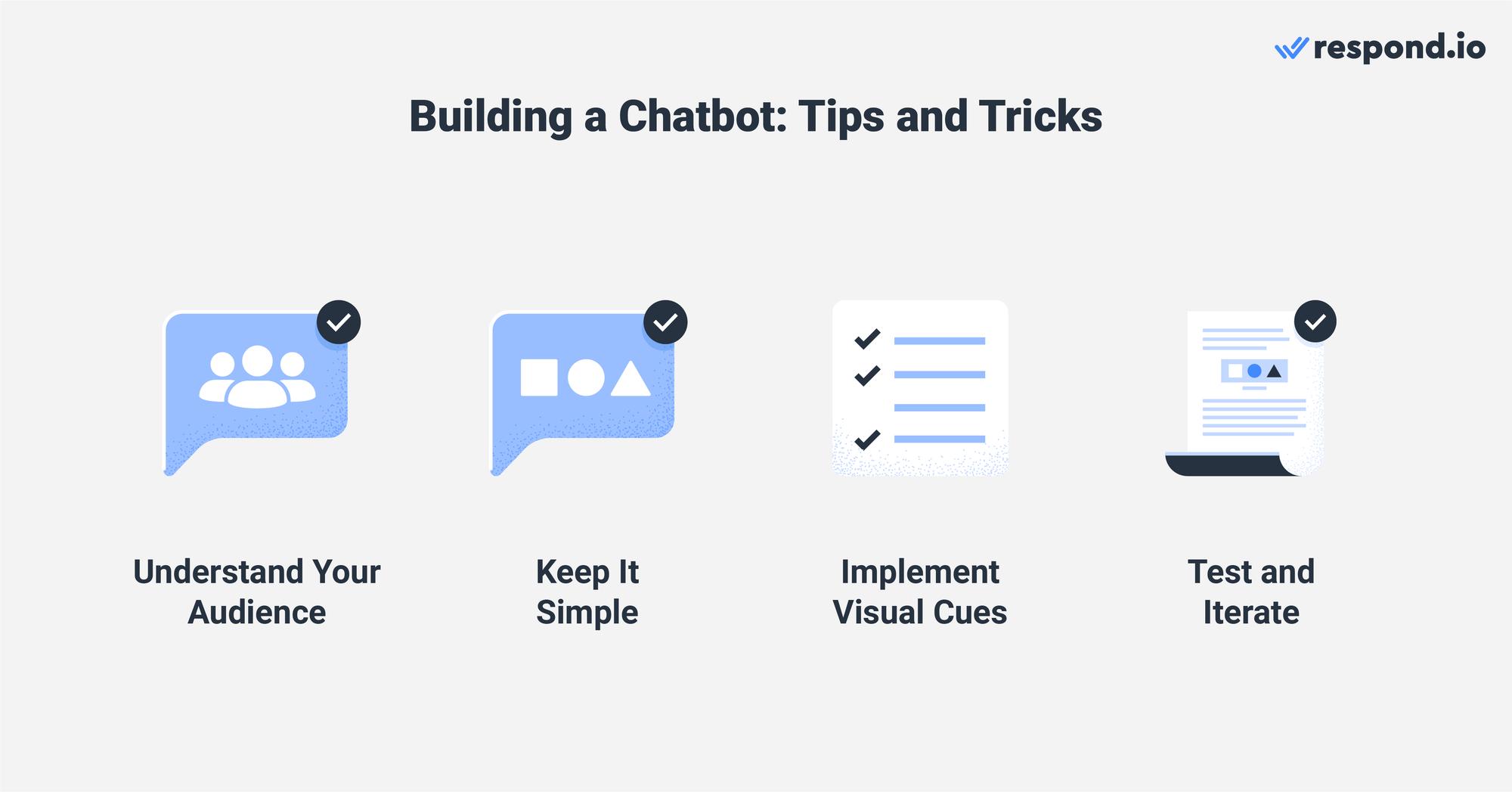
Much more than a customer service add-on, chatbots in education are revolutionizing communication channels, streamlining inquiries and personalizing the learning experience for users. For institutions already familiar with the conversational sales and support landscapes, harnessing the potential of chatbots could catapult their educational services to the next level. Here, you’ll find the benefits, use cases, design principles and best practices for chatbots in the education sector, predominantly for institutions or services focused on B2C interaction. Whether you are just beginning to consider a chatbot for education or are looking to optimize an existing one, this article is for you.
Chatbot for Education: An Introduction
A chatbot for education is a specialized type of artificial intelligence (AI) software designed to simulate conversation with users, providing them with automated responses to their inquiries. In the context of the education sector, these chatbots are tailored to meet the specific needs of students, educators, and administrative staff.
Let’s see why chatbots are becoming so popular in the education industry.
Benefits of Using a Chatbot for Education
Understanding why chatbots are critical in an educational context is the first step in realizing their value proposition. Here are some key benefits.

Real-Time Support
In the fast-paced educational environment, providing instant assistance is crucial. Chatbots excel at offering immediate support on a 24/7 basis, helping students with queries, and directing them to the appropriate resources.
Lead Nurturing
For education services looking to expand their reach and enrollments, chatbots are effective lead generators. By handling inquiries and routing promising leads to human reps, chatbots streamline the admissions process and boost conversion rates.
Data Collection and Analysis
Chatbots are exceptional data gatherers. By analyzing conversation data, educational institutions can gain insights into user preferences, pain points, and popular inquiries, informing decision-making and strategy.
Cost-Effectiveness
Deploying a chatbot significantly reduces the cost associated with customer support and lead generation. It ensures a substantial return on investment, especially for institutions with growing online demands.
Turn customer conversations into business growth with respond.io. ✨
Manage calls, chats and emails in one place!
Chatbot for Education: Use Cases
The versatility of chatbots allows for a range of applications in educational services. Adeel Akram, Senior Account Executive for respond.io, highlights the prominent use cases he encountered in the education field.
"Chatbots serve a dual purpose in education: supporting student inquiries on topics like accommodation changes, enrollment, or financial aid and converting leads in a competitive landscape.”
“With many institutions offering similar programs, such as the numerous universities in Malaysia presenting executive MBAs (Master of Business Administration), acquiring customers becomes a challenge. Chatbots emerge as crucial tools for efficiently managing inquiries and standing out in the competitive field", he added.

Admissions and Enrolment
By answering prospective students’ queries on courses, admissions, and the application process, chatbots simplify and speed up the enrolment process.
Student Services
Chatbots can assist enrolled students with a variety of services, including academic support, campus information, and extracurricular activities, enhancing the overall educational experience.
Career Guidance
Chatbots specializing in career services can serve as personalized career counselors and help students identify their strengths, explore career options, and search for job opportunities.
How to Build a Chatbot for Education Services
Start by picking a chatbot-building platform. We recommend using respond.io, an AI-powered customer conversation management software. You can start with a free trial and later upgrade to the plan that best suits your business needs.
Respond.io’s chatbot is called AI Agent. It is a superfast virtual agent that can accurately reply to customer inquiries. To ensure this, you only need to make sure you train it with your knowledge sources, such as course catalogs and syllabi, policies and procedures.

Once you are happy with your respond AI Agent, use it in a Workflow. Depending on your goal, you will design the Workflow differently. We have extensive information on chatbot-related topics, such as how to automate contact information collection and how to maximize customer service potential.
Before publishing your first chatbot, there are some tips and tricks that you should be aware of.
Building a Chatbot for Education: Tips and Tricks
Developing a chatbot for educational services is as much about the frontend design as it is about the backend logic. Here’s how to ensure your chatbot is user-friendly and effective.

Understand Your Audience
Before you start designing your chatbot, you need to have a clear understanding of your audience. What are their typical questions? What tone of voice resonates with them? Understanding your users is vital to designing a chatbot that they will engage with.
Keep Your Chatbot for Education Simple
The educational system's complexity can overwhelm students. Your chatbot’s design should reflect simplicity. Use structured conversation flows with clear options and avoid jargon that might confuse the user.
Implement Visual Cues
Visual cues such as progress bars, checkmarks, or typing indicators can help users understand where they are in the conversation and what to expect next. These cues add an element of interactivity and user guidance.
Test and Iterate your Chatbot for Education
Design is an iterative process. Regular testing with real users and incorporating their feedback is critical to the success of your chatbot. Each iteration should aim to improve the user experience and streamline communication further.
Overcoming Challenges in Building Chatbots in Education
While the benefits of chatbots in education are significant, there are challenges to consider.

Information Overload
Educational institutions have a wealth of information to offer. A strategic plan is essential to organize and present this data through the chatbot without overwhelming the user.
Maintaining Accuracy
Chatbots must be constantly updated with the latest information. Educational services change regularly, and inaccuracies could lead to issues with students or potential learners.
Balancing Automation with Human Touch
While chatbots can handle most queries, there will be times when a human touch is necessary. Ensuring that the handover from bot to human is seamless is a challenge that requires careful design.
Privacy and Security
Protecting student data is paramount. Chatbots must be designed with strict privacy and security controls to safeguard sensitive information.
If you are ready to explore chatbots' potential in the education sector, consider trying respond.io, a platform that revolutionizes customer communication. Education businesses like E4CC, Qobolak and CUHK have already seen success with respond.io. Sign up for a free respond.io trial.
Turn customer conversations into business growth with respond.io. ✨
Manage calls, chats and emails in one place!
FAQ and Troubleshooting
What features should I look for in an educational chatbot?
Look for features such as natural language processing, integration capabilities with school databases, scalability, and the ability to handle a wide range of queries. Because it checks all the boxes, we recommend respond.io.
Can chatbots replace human interaction in education settings?
Chatbots are intended to supplement human interaction, not replace it. For example, they can be very good at handling routine queries and qualifying leads. But human agents should step in when for sensitive or complex matters.
How do we measure the effectiveness of a chatbot in an educational setting?
All businesses have their own way of measuring their performance. In the context of chatbots for education, effectiveness is commonly measured by the reduction in response times, improvement in student satisfaction scores and the volume of successfully resolved queries.
Further Reading
If you enjoyed this reading, then check out these articles:






































 Electronics
Electronics Fashion & Apparel
Fashion & Apparel Furniture
Furniture Jewelry and Watches
Jewelry and Watches
 Afterschool Activities
Afterschool Activities Sport & Fitness
Sport & Fitness
 Beauty Center
Beauty Center Dental Clinic
Dental Clinic Medical Clinic
Medical Clinic
 Home Cleaning & Maid Services
Home Cleaning & Maid Services Photography & Videography
Photography & Videography
 Car Dealership
Car Dealership
 Travel Agency & Tour Operator
Travel Agency & Tour Operator




